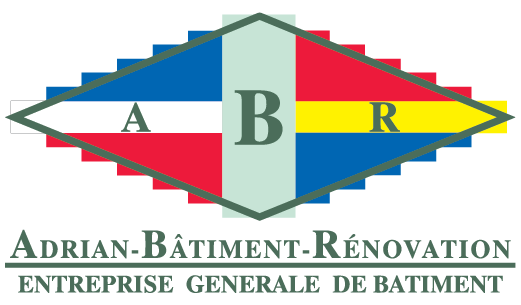En 2020, la France passe d’une réglementation thermique à une réglementation environnementale, la RE2020, plus ambitieuse et exigeante pour la filière construction.
Elle s’inscrit dans une action continue et progressive en faveur de bâtiments moins énergivores. Depuis 1974, plusieurs réglementations thermiques successives ont ainsi été mises en place. La dernière en date, la RT2012, issue du Grenelle du l’environnement, fixait déjà des exigences de résultats élevées en matière de conception du bâtiment, de confort et de consommation d’énergie ainsi que des exigences de moyens.
En France, le secteur du bâtiment représente 44 % de la consommation d’énergie et près de 25 % des émissions de CO2.
La réglementation thermique RT2012
Le Grenelle de l’environnement de 2007 a fixé à la France un objectif très ambitieux de division par quatre de ses émissions de gaz à effet de serre (GES) en 2050, par rapport à ses émissions de 1990, notamment grâce à :
- des bâtiments neufs produisant tous plus d’énergie qu’ils n’en consomment à compter de 2020 ;
- une massification de la rénovation des bâtiments existants, au plus tôt et sur une longue durée, à bon niveau de performance énergétique.
Le secteur du bâtiment (résidentiel et tertiaire) est un enjeu central dans la lutte contre le changement climatique et la réduction des émissions de gaz effet de serre. Il représente le secteur économique le plus consommateur d’énergie en France.
Appliquée depuis fin 2011, la réglementation thermique RT2012 s’appuie principalement sur trois attendus :
- une efficacité énergétique minimale du bâti, Bbiomax (besoin bioclimatique du bâti) ;
- une consommation conventionnelle maximale d’énergie primaire, Cepmax, portant sur les consommations de chauffage, de refroidissement, d’éclairage, de production d’eau chaude sanitaire et d’auxiliaires (pompes et ventilateurs) ;
- un confort d’été dans les bâtiments non climatisés, Ticref, limitant la température intérieure maximale que le bâtiment peut atteindre au cours d’une séquence de 5 jours très chauds d’été.
La réglementation environnementale RE2020
Introduites par la Loi de transition énergétique pour la croissance verte (LTECV) de 2015, la Stratégie nationale bas–carbone (SNBC) et la Programmation pluriannuelle de l’énergie (PPE) fixent des orientations pour les filières afin d’atteindre la neutralité carbone en 2050.
Trois principaux axes
La loi Évolution du logement, de l’aménagement et du numérique (ELAN) prévoit l’entrée en vigueur d’une nouvelle réglementation environnementale des bâtiments neufs en 2020, la RE2020.
Son objectif est de poursuivre l’amélioration de la performance énergétique et du confort des constructions, tout en diminuant leur impact carbone. Elle s’articule autour de trois principaux axes :
- Poursuivre l’amélioration de la performance énergétique et la baisse des consommations des bâtiments neufs. La RE2020 va au-delà de l’exigence de la RT2012, en insistant en particulier sur la performance de l’isolation quel que soit le mode de chauffage installé, grâce au renforcement des exigences sur l’indicateur de besoin bioclimatique, Bbio.
- Diminuer l’impact sur le climat des bâtiments neufs en prenant en compte l’ensemble des émissions du bâtiment sur son cycle de vie, de la phase de construction à la fin de vie (matériaux de construction, équipements), en passant par la phase d’exploitation (chauffage, eau chaude sanitaire, climatisation, éclairage…), via une analyse en cycle de vie.
- Permettre aux occupants de vivre dans un lieu de vie et de travail adapté aux conditions climatiques futures en poursuivant l’objectif de confort en été. Les bâtiments devront mieux résister aux épisodes de canicule, qui seront plus fréquents et intenses du fait du changement climatique.
La RE2020 repose sur une transformation progressive des techniques de construction, des filières industrielles et des solutions énergétiques, afin de maîtriser les coûts de construction et de garantir la montée en compétence des professionnels.
Une concertation de grande ampleur
Une grande phase de concertation rassemblant l’ensemble des acteurs de la construction a été lancée en janvier 2019. Ces groupes de concertation ont été alimentés par les travaux des 16 groupes d’expertise thématiques, eux-mêmes alimentés par les nombreuses contributions des acteurs du bâtiment, à la lumière des retours d’expérience de l’expérimentation E+C- récoltés depuis fin 2016.
Ce travail collaboratif a permis de dégager les points de consensus et les éventuelles dissensions pour l’élaboration de la RE2020
Les bâtiments concernés par la RE2020
Le champ d’application de la RE2020 est proche de celui de la RT2012 et de l’expérimentation E+C-. La RE2020 s’applique par ailleurs en plusieurs temps :
- Dans un premier temps, elle concerne : les maisons individuelles et les logements collectifs,
- Dans un second temps, elle concerne : les bureaux et les bâtiments d’enseignement primaire et secondaire,
- Dans un troisième temps, elle concerne les bâtiments tertiaires spécifiques : hôtels, commerces, gymnases, …
Les projets de construction de maison individuelle et de logement collectif faisant l’objet d’une demande de permis de construire ou d’une déclaration préalable déposée à partir du 1er janvier 2022 et les projets de construction de bureau et de bâtiment d’enseignement primaire et secondaire faisant l’objet d’une demande de permis de construire ou d’une déclaration préalable déposée à partir du 1er juillet 2022 sont soumis à la RE2020.
Pour plus d’information, vous pouvez vous rendre sur le site rt-re-bâtiment.developpement-durable.gouv.fr
